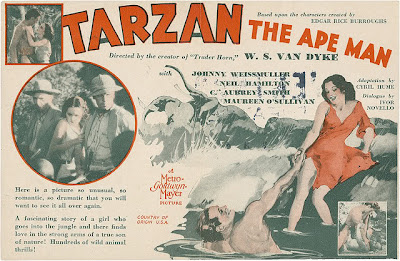At a workshop a couple of days ago, one of the women showed me some printed images on polymer clay. Apparently this is very easy to do, so I thought I'd try it for today's elephant.
I covered the history of polymer clay in a previous post, so I'll just describe today's technique here. From the videos I've seen, it looks dead simple: stick a laser print or photocopy face-down on a slice of polymer clay, wet the back, and rub gently until the paper is rubbed away. Cut or shape edges and pierce for jewellery if desired. Bake and seal the final image.
The charming little video below explains the process far better than I can.
For today's elephant, I went to the local office supply megastore and made a few colour photocopies from a little out-of-print book I have called The Life and Lore of the Elephant. I chose small images because I wanted to turn them into little pendants for a bracelet or necklace. I'm not sure if colour photocopies are problematic, so I made one black-and-white photocopy, just in case.
I cut them to the size I wanted for the final pieces. Because some of the originals had words on them and I didn't think to scan and reverse them, I cut off the words and just used the images. I didn't think I'd end up doing all of these today, but I like having choices.
Once I had the images, I pulled out my stash of polymer clay and softened a translucent white clay called "porcelain" by squishing it in my hands until it was reasonably malleable. I then rolled it out flat between two sheets of waxed paper with a rolling pin to a thickness of about 0.15 cm (1/16 inch).
I started with the image of a little green elephant jumping up and down on a bed. Placing it face-down on the clay, I made sure it had no air bubbles. The idea is to smooth it into the clay evenly and firmly.
Next, I painted on some water, but you can also spray it on with a spray bottle. Once it seems saturated and soaked-in, you can start rubbing away the paper "backing". This process of wetting the paper and rubbing it away took me about five minutes. I mostly used a paintbrush to rub the paper away, but a fingertip works slightly better. The main danger is the possibility of rubbing so hard that you begin to rub the image right off the clay. That started to happen a little, so I stopped.
This was what the final image transfer looked like. I then cut the edges with a very sharp knife.
I repeated this process with one other image, then pierced both of them with a tapestry needle so that I could add a jump ring after they were baked.
When they were ready to go, I baked them together on a cookie sheet in a 212˚F (100˚C) oven for about ten minutes.
They looked a bit dry or faded or something when they came out of the oven, so I sealed them with a glossy acrylic varnish. You can buy special polymer varnish, but any water-based varnish will do. If you use an oil-based varnish, apparently the clay turns to mush.
I painted both pieces with several coats of varnish, then figured it wasn't going to get much better.
I decided to add a large jump ring to each, and strung them on individual pieces of leather, along with crystals and a pearl. They're a bit junky, but as my first attempt with polymer-clay printing, I can't say I'm too disappointed.
The longest parts of this activity were softening the slightly old clay before I could print, and varnishing the final pieces. Other than that, it's very easy and quite quick.
I wouldn't rush to do this again, but if I were to make more of these, I'd probably make them smaller if they were for jewellery of some sort. Then again, they're kind of interesting, and it was fun to try something that, three days ago, I didn't even know existed.
Elephant Lore of the Day
According to legend, older elephants instinctively head towards an "elephant graveyard" when they reach a certain age. Their intention is supposedly to die alone, far from the herd.
The myth of an elephant graveyard has been propagated in books, films and popular culture for decades, if not centuries. In many of these sources, an elephant graveyard is often seen as the source of untold riches, for the wealth of ivory it is thought to contain. The truth, however, is far more mundane—and poignant.
When times are tough—during a drought, for example—starving elephants will gather where they hope to find food and water, such as dried-up waterholes. Because they often die in these locations, groups of skeletons are usually found together. Similarly, elderly elephants whose teeth have finally worn out will also seek out softer water plants, and will frequently die of old age, also near waterholes. The sight of elderly elephants in the vicinity of skeletons may be responsible for the notion that older elephants seek an existing graveyard when they are ready to die.
Large groups of elephant skeletons are also found in killing fields, where elephants have been slaughtered for their ivory or meat. This kind of "graveyard" has existed for millennia, dating as far back as the days of the woolly mammoth in northern Europe.
Interestingly the term "elephant graveyard" has found its way into geology, where it refers to a "hypothetical" accumulation of big blocks of rock that have sheared away from the large expanses of granite known as batholiths.
To Support Elephant Welfare
Elephant sanctuaries
(this Wikipedia list allows you to click through to information
on a number of sanctuaries around the world)
Wildlife Trust of India

















No comments:
Post a Comment